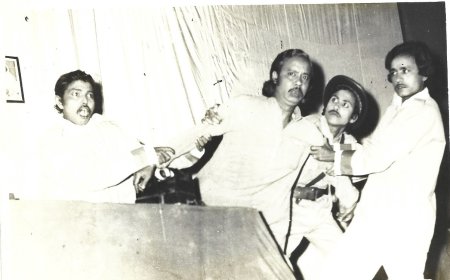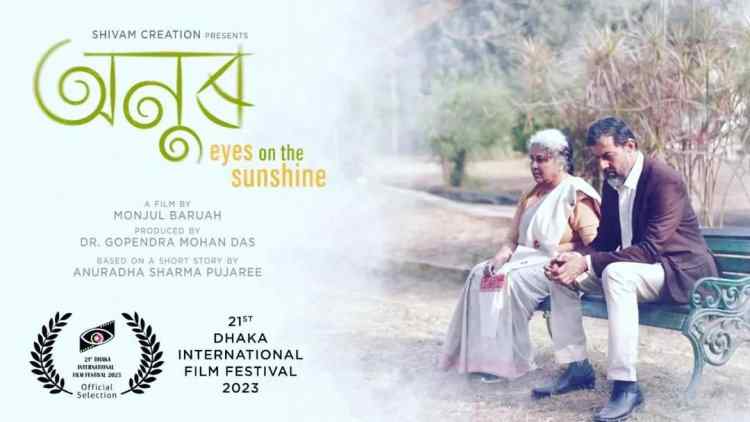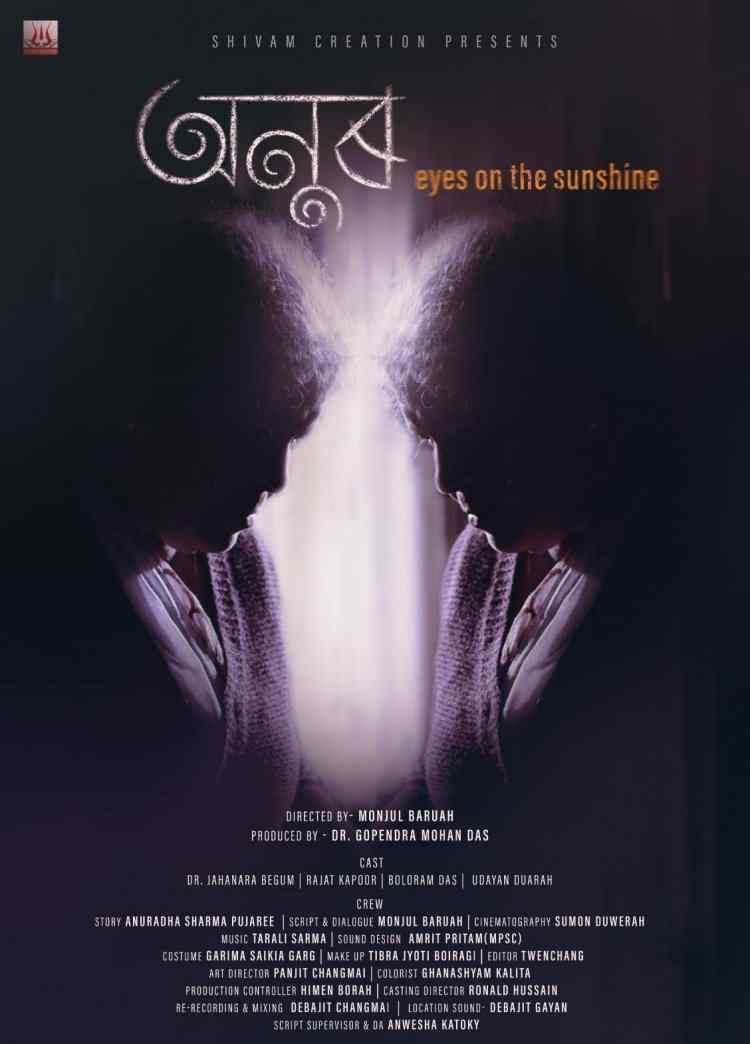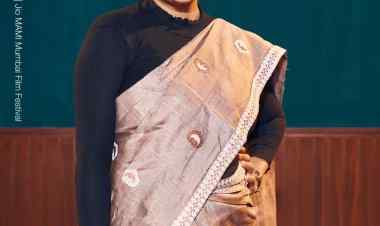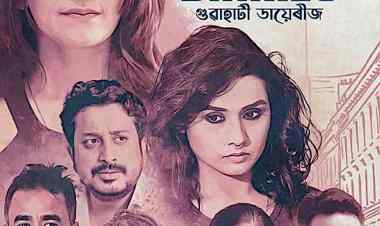Anur: The Saga of Loneliness and Old Age Love
Monjul Baruah's Anur: Eyes on the Sunshine addresses the conflict between solitude and romantic attachment in the golden years.
The success of Anur: Eyes on the Sunshine, filmmaker Monjul Baruah’s third feature film, as evidenced by its selection for the “Indian Cinema Now” section at the 27th International Film Festival of Kerala (IFFK) and the “Cinema of the World” section at the 21st edition of the Dhaka International Film Festival, indicates that experimentation in Assamese cinema will pay off by giving viewers something fresh to experience.
The audience’s response to the film’s ‘Special Screening’ on July 10 at the Dr. Banikanta Kakati Auditorium of Srimanta Sankardev Kalakshetra for the distinguished gathering of guests was overwhelmingly encouraging. Veteran filmmaker Jahnu Barua commented, “Anur is the milestone of Assamese cinema,” while Asha Kuthari Chaudhuri, Professor of English, Gauhati University remarked, “It is a beautiful film in which metaphors have been developed and designed through the use of light”. Dr. Poona Mahanta, a theatre critic, and former Professor, lauded the filmmaker Monjul Baruah and said he had watched an “excellent film.” Writer Anuradha Sharma Pujari remarked, “The film Anur is a new hope in an Assamese film. The outstanding use of light and sound, the poignant performance by Dr. Jahanara Begum, etc., all contributed to my admiration of the work."
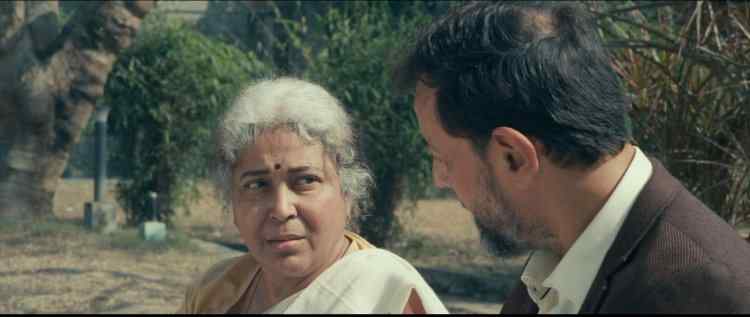
Monjul Baruah, an accomplished filmmaker who has earlier made two feature films, Antareen (2017) and Kaaneen: A Secret Search (2019), has experimented with the narrative structure and length of his third feature film, Anur. Most feature films made in India lately have run between 90 and 100 minutes in duration. However, Baruah demonstrates enormous conviction by making a film that lasts longer than two hours, which is rare in the context of Assamese filmmaking at the time.
Based on the short story "Bhal Puwar Xomoi" by Sahitya Akademi award-winning author Anuradha Sharma Pujari, the film tells us about a widow, Anupama Barua (played by Dr. Jahanara Begum), who lives alone in the home that houses the memories of her late husband. One morning discovers a stranger, Loshith Modliar (Rajat Kapoor), lounging on her lawn. The trespass, which at first made her feel afraid, ultimately makes a welcome entry into her cramped loneliness. This loneliness remained impenetrable to the regular calls from her son, who lives overseas and to her other regular visitors. A trustworthy young man, Om (Boloram Das), who attends to her requests for home requirements, and a maid, Emina (Rajeshree Sharmh) routinely arrives to take care of the housework are portrayed with adroitness. The widow’s lonely life's strange nights and empty days, however, remained beyond their purview. As if she had been waiting for his assistance to unburden her fear and explore her yearning, to intrude into the world outside her lonely widowhood, it is the trespasser on her lawn who comes into her lonely inner world as well. But the question is: will the widow reach out to him to escape her isolating and confining widowhood? And what happens next? For that, the audience needs to go and watch the film which will be released in theatres on 27 January 2023.
The film sets itself apart from other contemporary Indian cinema in its focus on the universal themes of old age and isolation. Anupama, Loshith, Om, Niju, and Emina- all five characters- all had signs of loneliness, as did Anupama Baruah. The film's thematic focus on isolation is reflected in the fact that the first letters of all five characters spell out "ALONE."
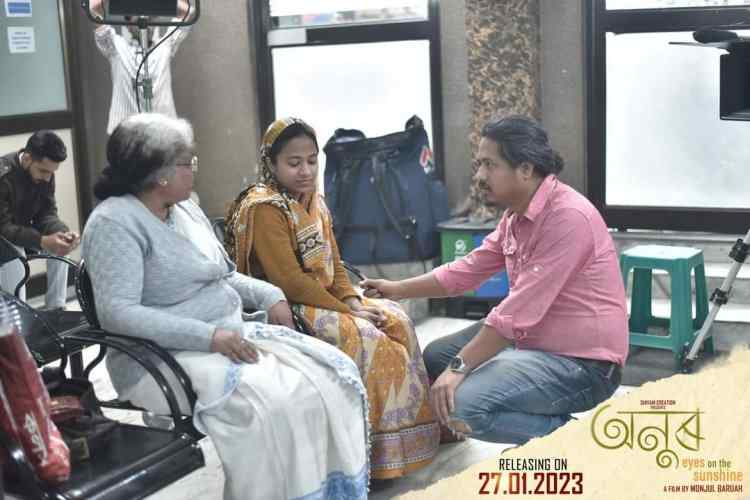
The film opens with an elderly woman going from one dark room to another in her home as if she had heard a noise outside. Baruah deftly employs the elements of silence, sound, light, and the old woman's expression to communicate the character's mental and physical state. It is important to make a point of noticing how the "Slow Pace Movement" of the camera, which piques the interest of the audience, plays a vital role in the film. The film's visual style is marked by the use of colour tonality in these scenes. The director's use of colour tones to portray the old woman's deteriorating and vivid condition is striking. This accomplishment is due in large part to the work of Ghanashyam, who handled the film's colour grading.
Dr. Jahanara Begum, in her role as Anupama Barua, wowed the audience with her extraordinary acting prowess. Her mature posture and demeanour are impeccable. She made a truly excellent and significantly more mature performance than in the film "Kaaneen." Monjul Baruah deserves credit for moulding the actor into the character, which demonstrates his skilful filmmaking. Boloram Das as Om captivates us with her natural acting ability. But filmmaker Monjul deserves praise for the way he deals with Rajat Kapoor, a veteran actor for whom casting is a daunting challenge. In actuality, it was Anwesha Kotoky, who "worked as a script supervisor and as my assistant, enormously helped," who, in fact, taught Rajat Kapoor the Assamese pronunciation," as Monjul Baruah says. The music composed by Tarali Sarma played a significant part in making the film's subject matter appealing to the audience. Suman Duwarah's camera composition introduces a novel, innovative approach to the frame's composition. When it comes to the costume design, Garima Garg is precisely in line with the tone and ambiance of the scene. The scene in which Anupama’s son is shown driving a car with his little daughter in a foreign nation may infuriate the audience because the filmmaker could have used enormous canvas to illustrate the scene.
Anur, a film about loneliness and love in old age, will captivate audiences with its unique perspective.
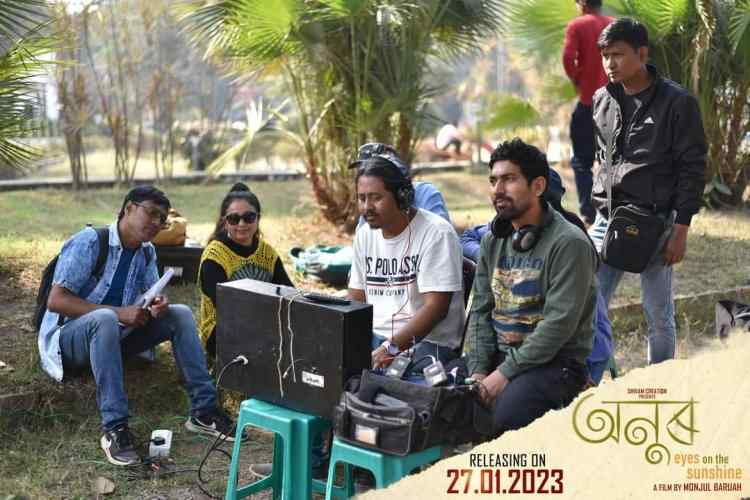
What's Your Reaction?









































